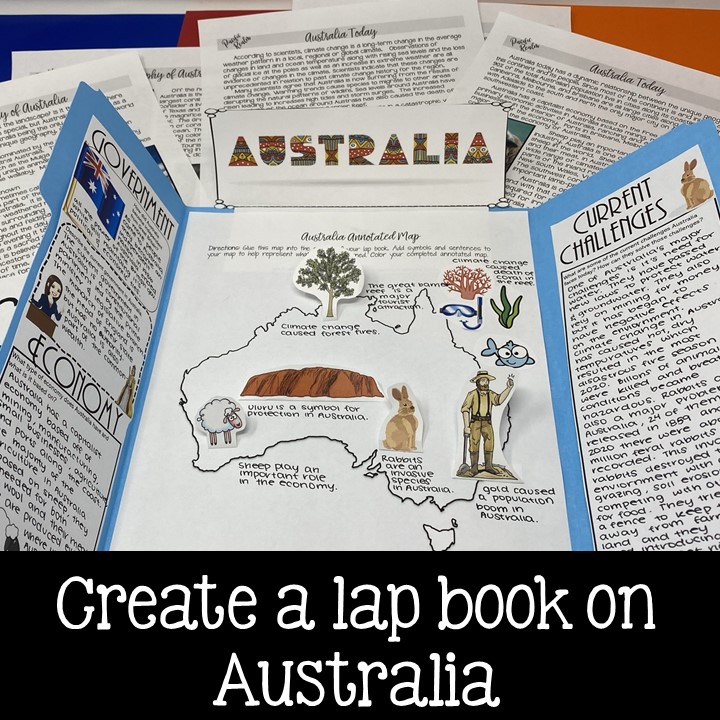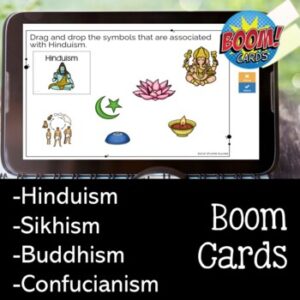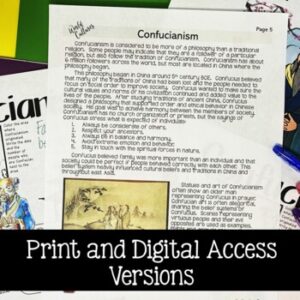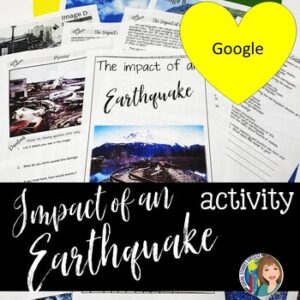Description
Explore Australia with content stations as your students create a lap book on Australia. This lap book is designed to help students summarize content from the activity on Australia. It contains content readings to create stations for Geography of Australia, History of Australia, and Australia Today. In addition to the content readings, your students will have questions and video clips to watch in each station.
With this resource, you will receive,
– Word Wall terms, Vocabulary Chart and a Connection Cards Game. The vocabulary terms include: aboriginal, reef, constitutional parliament, convict, feral, infestation, and indigenous.
– A lap book template for the Geography of Australia, History, Government, Economy, and Current Issues in Australia.
–Readings for stations including Geography of Australia, History of Australia, and Life in Australia Today
–Questions and Video Clips for Geography of Australia, History of Australia, and Life in Australia Today
2019 World Cultures TEKS
(1) History. The student understands that historical events influence contemporary events. The student is expected to:
(A) trace characteristics of various contemporary societies in regions that resulted from historical events or factors such as colonization, immigration, and trade; and
(B) analyze the historical background of various contemporary societies to evaluate relationships between past conflicts and current conditions.
(3) Geography. The student understands the factors that influence the locations and characteristics of locations of various contemporary societies on maps and/or globes. The student is expected to:
(A) identify and explain the geographic factors responsible for patterns of population in places and regions;
(B) explain ways in which human migration influences the character of places and regions;
(C) identify and locate major physical and human geographic features such as landforms, water bodies, and urban centers of various places and regions; and
(D) identify the location of major world countries for each of the world regions.
(4) Geography. The student understands how geographic factors influence the economic development and political relationships of societies. The student is expected to:
(A) explain the geographic factors responsible for the location of economic activities in places and regions;
(5) Geography. The student understands the impact of interactions between people and the physical environment on the development and conditions of places and regions. The student is expected to:
(A) describe ways people have been impacted by physical processes such as earthquakes and climate;
(B) identify and analyze ways people have adapted to the physical environment in various places and regions; and
(C) identify and analyze ways people have modified the physical environment such as mining, irrigation, and transportation infrastructure.
(8) Economics. The student understands categories of economic activities and the data used to measure a society’s economic level. The student is expected to:
(A) define and give examples of agricultural, retail, manufacturing (goods), and service industries; and
(13) Culture. The student understands the similarities and differences within and among cultures in various world societies. The student is expected to:
(C) analyze the experiences and contributions of diverse groups to multicultural societies; and
(D) identify and explain examples of conflict and cooperation between and among cultures.
(18) Science, technology, and society. The student understands the influences of science and technology on contemporary societies. The student is expected to:
(C) make predictions about future social, political, economic, cultural, and environmental impacts that may result from future scientific discoveries and technological innovations.
(19) Social studies skills. The student applies critical-thinking skills to organize and use information acquired through established research methodologies from a variety of valid sources, including technology. The student is expected to:
(A) differentiate between, locate, and use valid primary and secondary sources such as oral, print, and visual material and artifacts to acquire information about various world cultures;
(B) analyze information by sequencing, categorizing, identifying cause-and-effect relationships, comparing, contrasting, finding the main idea, summarizing, making generalizations and predictions, and drawing inferences and conclusions;
(C) organize and interpret information from outlines, reports, databases, and visuals, including graphs, charts, timelines, and maps;
(20) Social studies skills. The student uses geographic tools to collect, analyze, and interpret data. The student is expected to:
(A) answer geographic questions, including: Where is it located? Why is it there? What is significant about its location? How is its location related to the location of other people, places, and environments? Using latitude and longitude, where is it located?;
(B) pose and answer questions about geographic distributions and patterns for various world regions and countries shown on maps, graphs, and charts;
(C) compare various world regions and countries using data from maps, graphs, and charts;
➬Customer Tips:
© 2021 Social Studies Success® This purchase is for you and your classroom. Duplication for an entire school, an entire school system, or for commercial purposes is strictly forbidden. Please have other teachers purchase their own copy. If you are a school or district interested in purchasing several licenses, please contact me for a district-wide quote. Do not share this document with Amazon Inspire.
Please review all product descriptions and previews. If you have a question, contact me before you purchase at SocialStudiesSuccess1@gmail.com. As this is a digital product, all sales are final.
❤️ Dawn















Reviews
There are no reviews yet.